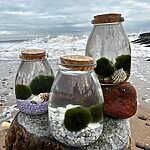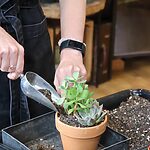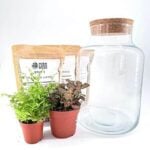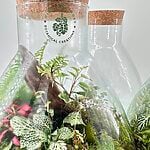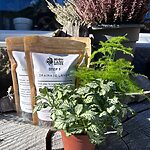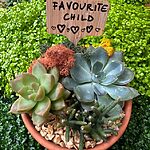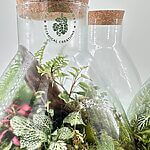Table of Content
- About
- Light
- Humidity
- Water
- Soil
- Pest & Diseases
- Feed
- Pruning & Propagating
- Repotting
- Troubleshooting & Tips
- Toxicity
- Species
- Sansevieria Victoria Whale Fin
- Sansevieria Trifasciata
About
Sansevieria has been on the houseplant scene for a long time and for a number of good reasons. Some species of this genus are some of the hardiest and most robust houseplants you can buy. They are the most tolerable to neglect and can seem to survive just about anything that is thrown at them. For beginners or those who wish for greenery in their homes but are not green-fingered, this is the plant for you.
Sanseveria has recently gone through a reclassification change as a result of molecular phylogenetic studies, so since 2017 it has been included in the genus Dracaena which is part of the Asparagaceae family. The original genus of Sansevaria was made up of around 70 different species that widely range from thinner-leafed tropical environment plants to the mega resilient desert dwelling succulent varieties. This highly diverse species is native to a few different regions most notably across Africa and Southern Asia. It is this wide variety of environments that has led Sansevieria to create such wide differences from species to species.
Houseplant Sansevieria is often the hard-leafed species, these incredibly robust succulents can grow up to eight feet tall if well-kept for long enough. But they offer much more than height. Their tight slender nature allows them to have a big presence without being over-imposing and growing widely out of control. This type of Sansevieria is often referred to as a Snake plant or Mother-in-law Tounge due to the tongue-like appearance of its leaves and maybe its notably hard-to-kill nature.
These features have helped this plant to become amongst the most popular and frequently bought houseplants. You can put it just about anywhere from the brightest spot to the darkest and this plant will still be happy and growing.
Light
Sansevieria will survive in a spectrum of light conditions. Their ideal location will be set in a steady supply of bright indirect sunlight with some early morning exposure to direct light.
That being said they will survive just about anywhere! The growth habits will change depending on their exposure to light, the darker the environment the slower they will grow and the brighter the light the more vigorously they will grow. This rule also applies to watering needs.
In low light conditions, they will still require some exposure to indirect light but could happily survive for up to a couple of months without seeing the sun and have sometimes been referred to as the cupboard plant.
Sansevieria can be trained to tolerate direct sunlight as well. With gradual exposure, this plant can quite happily live in the full sun all day. The only drawback is the vigour with which it grows.
Humidity
Overall, Sansevaria is not fussy when it comes to humidity, they will happily thrive in the average humidity level of 40%. The only time they may suffer from lack of humidity is if they are placed directly by a radiator or a consistent draft that causes them to dry out quicker than usual, this can lead to browning tips.
Water
If anything is likely to kill your Sansevaria it will probably be over-watering. It’s important to remember that these plants are often succulents and can go long periods without water because they keep reserves stored in their leaves. Even when the soil is becoming dry they can go on to survive without water for a few weeks, if not longer.
During the winter months, the plant is likely to go dormant and will only need to be checked monthly for water.
Only water the plant once the soil has become fully dry!
Pro Tip
Before you water your plant, take note of the weight of the pot. Once you’ve watered the plant, try to notice the difference in weight from before. Now you can quickly tell if your plant needs water by just lifting it up.
Soil
Sansevaria prefers well-drained soil. The ideal soil mix will be nutrient-rich, allow for good aeration, be slightly acidic, and free-draining.
It’s best to use ¾ succulent potting mix and ¼ houseplant potting mix, this will provide a well-balanced environment. But, depending on conditions, you can always add perlite for some additional drainage, and vermiculite for added water retention. With a combination of these, you can provide the best environment for your plant to thrive.
Pest & Dieases
It is good practice to regularly check your plants for any signs of aphids, red spider mites, mealy bugs, and thrips. You may notice some signs of distress and allow yourself time to prevent a full-blown attack.
The most common pests that are attracted to Sansevaeria are aphids, mealybugs and red spider mites, which will often be caused by overwatering.

Check our video on homemade pest remedies or head over and read are Fungus Gnat Fact Check
Feed
Feeding your plants is a good habit but it won’t make a huge difference to Sansevaria. There will be enough nutrients in the soil to help sustain all of the plant’s nutrient requirements.
If you do want to feed your plant use cactus feed diluted down to a minimum of half strength and apply every six to eight weeks and never during the winter.
Pruning & Propagating
It’s good practice to every so often prune off the oldest leaves on the outside of the plant and also remove any damaged leaves as this will help to encourage new growth and keep the plant healthy. It is best to only prune during the growing season as cutting back leaves can cause stress to the plant and it is best to avoid this while the plant is dormant during the winter months.
REMEMBER – Always use clean and sharp pruning scissors!
Sansevieria are easy to propagate from cuttings.
Simply place your cuttings in a glass of rainwater and wait for up to 2-4 weeks to start seeing signs of new roots. You will need to regularly change the water to avoid algae. Once you have substantial root growth you can place the cutting into a small pot of Cactus mix
You can also put your cutting straight into a jar with fresh sphagnum moss. This is probably the easiest way to propagate as it involves the least steps. Simply take your cutting at the base of the leaf, find a jar or pot preferably with no drainage holes, fill it up with fresh moss and nestle your cutting in the centre.
Fill up the jar with water so the moss has been evenly watered and then drain out all excess water making sure not to leave any at the bottom of the jar when standing upright. Now just keep an eye on your new cutting, checking the moss every couple of days to ensure it hasn’t dried out.
Sansevieria grow from rhizomes so another easy way to propagate these plants is by dividing them.
Dividing Sansevieria is a really simple and easy job. Due to their clump-forming nature, the natural division points are clear to see and will often only need a gentle pull apart. Ensure that each clump has a decent amount of roots attached before pulling it away from the main root ball. With especially large or mature Sansevieria it may be tricky to pull these clumps apart as the roots will be tangled, forming a strong bond between clumps. In this case, it is best to use a sterilised sharp knife to cut through the root ball, again ensuring to leave a decent amount of roots on each section you are dividing.
Place each division into a suitable-sized pot, water it thoroughly and leave it to settle into its new home.
Repotting
Sansevieria will not often need reporting they tend to have slow-growing and compact root systems. You might find yourself repotting every two to four years. It is worth putting it into an extra sturdy pot as the roots of this plant can be strong and easily break plastic pots as they grow.
The pot size can increase by one step up for as long as you have the space to house the new influx of growth. If you have reached your maximum pot size you will need to top-dress the plant once a year with a fresh layer of soil to replenish the nutrients.
The best time to repot your Sansevieria plant is when spring arrives. Outside temperatures will rise and the daylight hours will increase. When this happens your Sansevieria plant will react quickly to the environmental change and start producing lots of new roots and growth.
You will need to pick a pot with good drainage, we don’t want water hanging around the roots. Next, fill a third of the way up with Potting mix(insert link). Place the root ball of the plant in the centre of the pot.
Next, fill the pot with the rest of your potting mix and firm down the soil.
When you’ve finished and got your plant back in the perfect spot you can give it a thorough watering to settle the plant into its new pot. Keep a close eye on it for the first few weeks and then relax back into your normal watering and feeding schedule.
Troubleshooting & Tips
- Yellow or brown leaves will most commonly be a sign of overwatering. If you notice a sudden change to the leaf colour you should check for root rot, if this goes untreated it can cause the plant to collapse.
- Dropping leaves are signs that the plant is not happy with its environment, it could be watering, light or poor potting soil.
- If you’ve left the plant without water for a touch too long and the soil has come compacted and shrunk away from the edge, soak the plant for 5-10 minutes in water to loosen the soil and rehydrate.
- Sansevieria will produce flowers, they are often sweet-smelling and appear during the night. They can be left on the plant and will naturally fall off once the flowering is over.
Toxicity
Sansevara is mildly toxic and contains a poison that causes mouth swelling if ingested. Best to keep in safe places away from children and animals.
Species
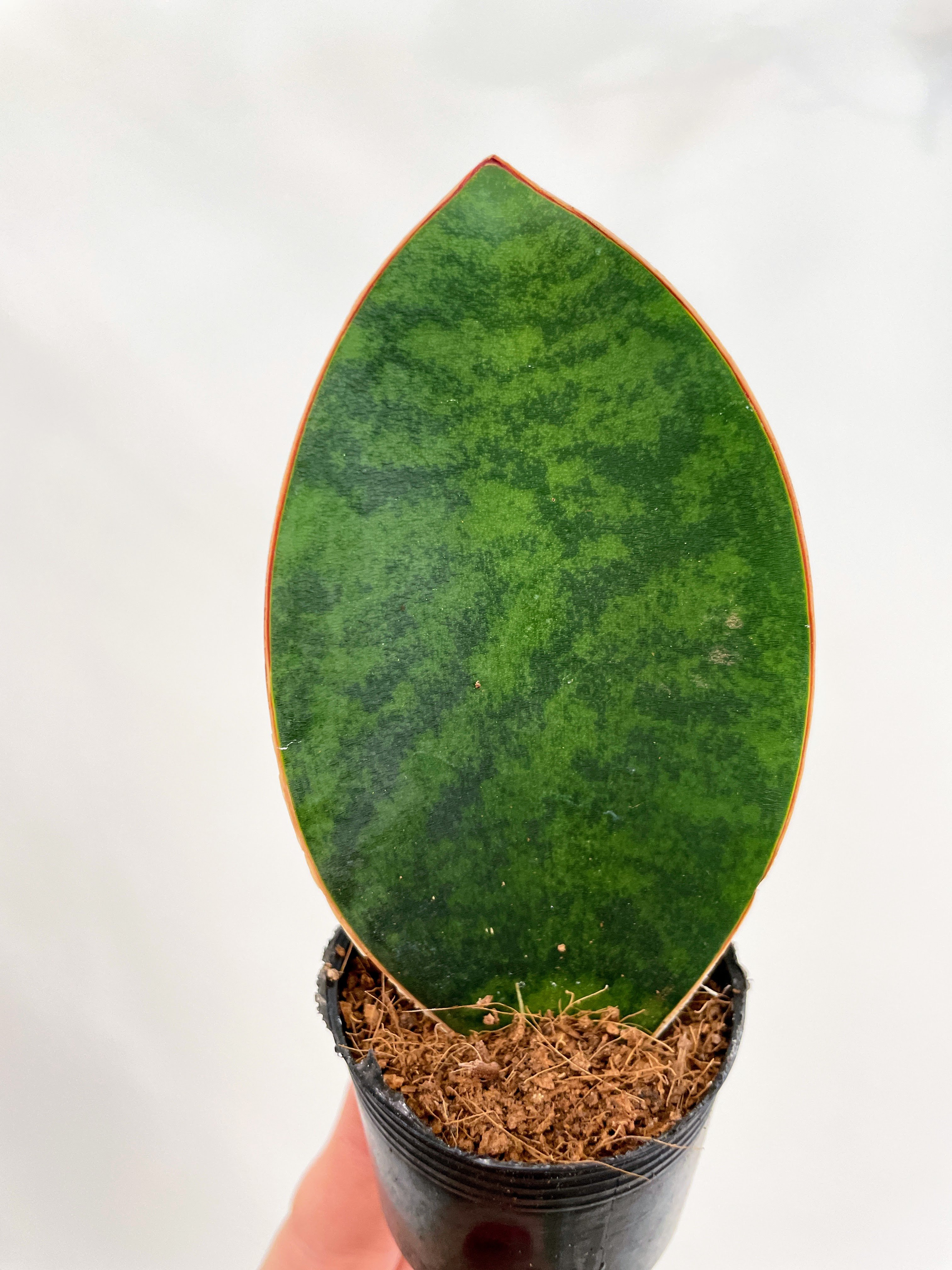
Sansevieria Victoria Whale Fin
Sansevieria Victoria Whale Fin, also known as Whale Fin Snake Plant, is a strikingly unique and visually captivating plant. Its leaves are thick and fleshy, resembling the shape of a whale fin, hence its name. The leaves are smooth and glossy and a beautiful shade of deep green, with distinct horizontal bands of lighter green.
Sansevieria Trifasciata
Sansevieria Trifasciata is a stunningly beautiful and resilient plant. Its leaves are long, slender, and pointed, with an eye-catching pattern of vertical green stripes running the length of each leaf. The leaves stand upright and grow in a rosette formation, creating an elegant architectural look.
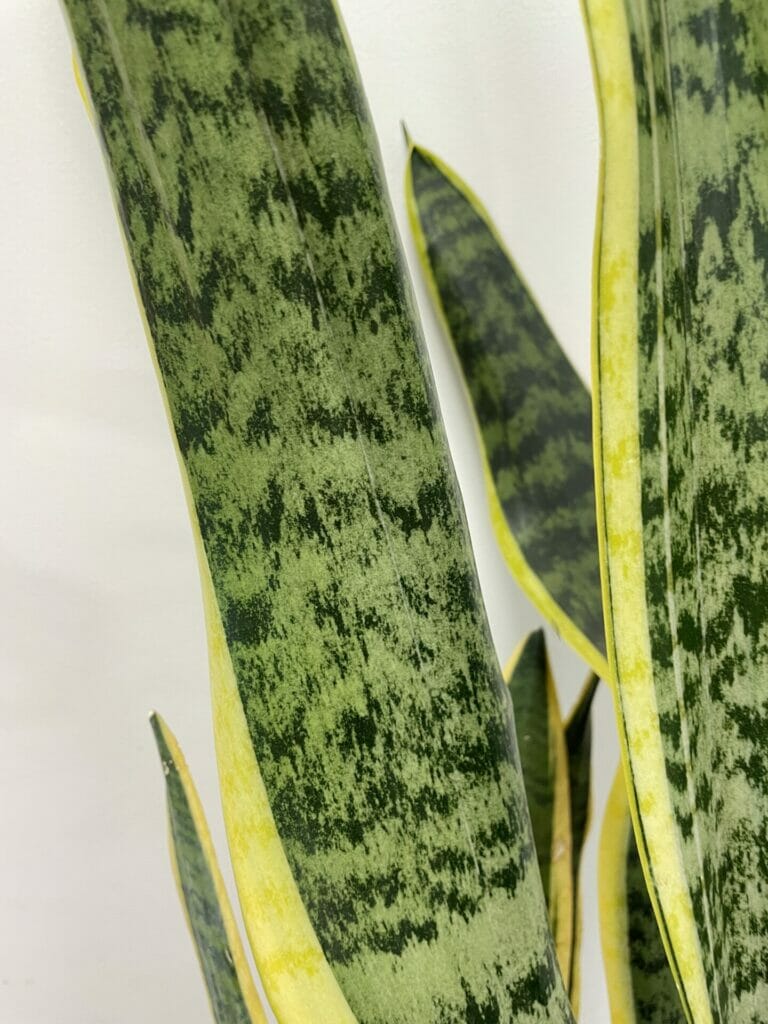
If you enjoyed this guide head over to Articles & Blogs to learn more or check out our YouTube for even more useful information!


